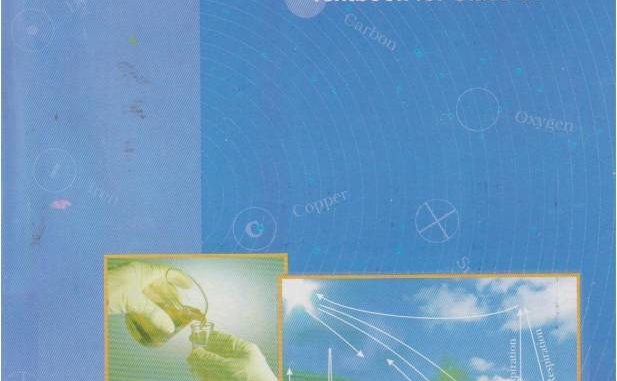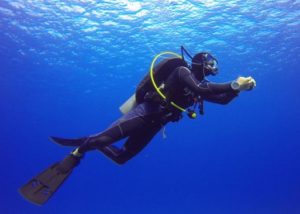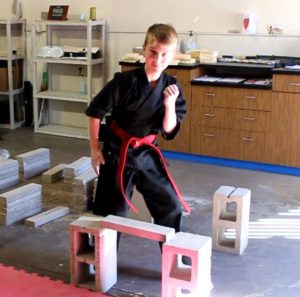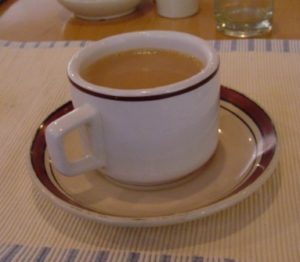
Class 9 Science NCERT Solutions
Matter in Our Sorroundings NCERT Questions
In this article you can check NCERT Solutions of Class 9 Science book. We have given solutions of NCERT back questions and NCERT box questions arising between the chapter Matter in our Sorroundings.
Class 9 Science NCERT Solutions: Matter in Our Sorroundings
Q.1. Which of the following are matter?
Chair, Air, Love, Smell, Hate, Almonds, thought, Cold, Cold drink, Smell of perfume.
Ans. Matter from the given list are Chair, Air, Almonds, and Cold drink.
Q.2. Give reasons for the following observation:
The smell of hot sizzling food reaches you several metres away, but to get the smell from cold food you have to go close.

Ans. The smell of hot sizzling food reaches our nose several metres away, because when the food is hot, the food particles have very high kinetic energy and they move with very high speeds. Diffusion process takes place very fast. While this is not the case with cold food, the particles in that case don’t have much kinetic energy due to absence of heat.
Q.3. A diver is able to cut through water in a swimming pool. Which property of matter does this obeservation show?

Ans. A diver is able to cut through water in a swimming pool. It shows the property that particles of matter have space between them. Water particles have space between them that’s why a diver is able to cut through it easily.
Q.4. What are the characteristics of particles of matter?
Ans. The characteristics of particles of matter are:-
- Particles of matter have space between them
- Particles of matter attract each other.
- Particles of Matter are continuously moving.
NCERT Box Questions, Page no. 6
Q.1. The mass per unit volume of a substance is called density. (Density= Mass/Volume)
Arrange the following in order of increasing density: air, exhaust from chimneys,honey, water, chalk, cotton and iron.
Ans. Increasing density
Air -> Exhaust from chimneys -> Cotton -> Water -> Honey -> Chalk -> Iron
Q. 5. Tabulate the differences in the characteristics of states of Matter.
b) Comment upon the following: Fluidity, Rigidity, Compressibility, filling a gas container, shape, kinetic energy and density.
Ans.
Solids
Shape : Fixed Shape
fluidity: Can not flow
Compressibility: Can not be compressed
Filling a gas container: Can’t fill a gas container
Liquid
Shape: Fixed Shape
Fluidity Can easily flow
Compressibility Compressible
Filling a gas container: Can fill a container
Gas
Shape No fixed shape
Fluidity Can flow
Compressibility Can be compressed
Filling a container Can fill a container
Q.3. Give reasons
(a) A gas fills completely the vessel in which it is kept.
The particles of gas a re free to move and they have very high kinetic energy which allows them to move freely in all directions.
(b) A gas exerts pressure on the walls of the container in which it is kept
The particles of gas have very high kinetic energy due to which they move freely against the walls of the container, hit each other and move with more speeds. This exerts pressure against the walls of the container.
(c) A Wooden table should be called a solid.
A table should be called a solid because it shows all the properties of a solid. It can not be compressed, it has fixed shape and can not flow.
(d) We can easily move our hand in air but to do the same through a solid block of wood we need a karate expert.

We can easily move our hand in air because particles of matter have large space between them and they have very low or negligible force of attraction. This allows us to move our hand freely. But in the case of solid block of wood, the particles have high force of attraction and they do not have space between them.
Q.4. Liquids generally have very lower density as compared to solids. But you must have observed that ice floats on water. Find out why.
Ans. Ice is solid but its has lower density than water because of the structure of an ice cube, If you observe an ice cube, you will notice that it has cage like structure which allow spaces in them. That’s why it has lower density and ice floats on water.
NCERT Box Questions, Page 9
Q.1. Convert the following temperature to Celsius scale:
(a) 300K
Ans. 0 c = 273K
300K = 300 -273= 27 degree celsius.
(b) 573K
573-273= 300 C
Q.2. What is the physical state of water at:
(a) 250 C
Ans.Gas
(b) 100 C
Water
Q.3. For any substance, why does the temperature remain constant during the change of state?
The temperature remains constant during the change of state because the heat supplied is being used to overcome the forces of attraction between the particles. The energy is utilized in weakening the forces of attraction between the particles. This heat is known as latent heat.
Q.4.State one method to liquefy atmospheric gases.
The gases are contained in a gas cylinder having a piston on it. Using the piston we can create more pressure. Also reduce the temperature and let the gas cool down. So, by increasing the pressure and by cooling the gas we can easily liquefy the gases.
NCERT Box Question Page 10
Q.1. Why does a desert cooler cool better on a hot dry day?
The desert cooler has layers on all 3 sides. Water gets constantly being sprayed on the 3 sides of the cooler. This water gets evaporated due to hot weather outside. This evaporation creates cooling inside the cooler and this cool air then spreads in the whole room.
Q.2. How does the water kept in an earthern pot (matka ) become cool during summers?
The matka or earthern pot has tiny pores on it. The water on the outer surface of the pot gets evaporated continously and the inner temperature gets cooler. This way the water becomes cooler in an earthern pot.
Q.3. Why does our palm feel cold when we put some acetone or petrol or perfume on it?
Ans. When we put perfume, petrol or acetone on our palm they gets evaporated and this evaporation on the surface causes cooling effect on the surface. We feel a cooling effect on our palm.
Also Read: Class 10th Science Questions/Answers
Q.4. Why are we able to sip hot tea or milk faster from a saucer rather than a cup?

Evaporation depends on the surface area. When the surface area of the container increases the rate of evaporation also increases. The saucer has a large surface area as compared to the cup. So, evaporation takes place faster in case of a saucer as compared to cup. This way we are able to sip tea faster from a saucer than a cup.
Q.5.What type of clothes should we wear in summers?
We should wear cotton clothes in summers. Cotton clothes has tiny pores in it. These pores absorbs the sweat from our body and it gets evaporated faster because of air. This process causes cooling effect.
Also Read: 5 Best MBA Colleges of India
NCERT Back Exercise Questions
Q.1. Convert the following temperature to the Celsius scale.
(a) 293 K
293-273 = 20 C
(b) 470K
470-273 = 197 C
Q.2 Convert the following temperature to Kelvin Scale.
(a) 25 C = 25 + 273 = 293 K
(b) 373 C = 373 + 273 = 646K
Q.3. Give reasons for the following observations.
(a) Napthalene balls disappear with time without leaving any solid.
Napthalene balls do not leave any residue because they show the process of sublimation and in sublimation the product changes directly into the vapour state instead of going to the liquid state.
(b) We can get smell of perfume sitting several metres away.
We can get the smell of a perfume when it is opened because the particles get mixed with air particles and they show diffusion process. That’s why the smell of the perfume reaches to people sitting several metres away.
Q.4. Arrange the following substances into increasing order of forces of attraction between the particles- water, sugar, oxygen.
Ans. Oxygen -> Water-> Sugar
Q.5. What is the physical state of water at-
(a) 25 C (b) 0 c (c) 100 C
(a) Liquid (b) Solid (c)Vapours (Gas)
Q.6. Give 2 reasons to justify:
(a) Water at room temperature is liquid
(b) An Iron almirah is a solid at room temperature.
Ans. (a) Water at room temperature is a liquid because its freezing point is 0 degree celsius and 100 degree celsius is the boiling point. So, it remains in the liquid state at room temperature 25 degree celsius.
(b) Almirah is solid at room temperature because room temperature is just 25degree celsius only. And iron’s melting point is extremely high. So, almirah is in solid state.
Q.8. What produces more severe burns, boiling water or steam?
Steam will cause more severe burns as compared to the boiling water at 100 C because steam will have latent heat, i.e hidden heat in it which produces more severe burns and produces more heating effect.
Q.9 Name A, B, C, D, E and F in the following showing change in its state.
Note: For diagram check NCERT book
Ans. A is melting
B is evaporation
C is Condensation, cooling
D is Solidification
E is Sublimation
F is also sublimation
So, these were the Class 9 Science NCERT Solutions, Box questions and NCERT Back Questions Answers of the Chapter Matter in Our Sorroundings. Don’t forget to share this with your friends. Stay tuned with Careeradvice4u.

Leave a Reply